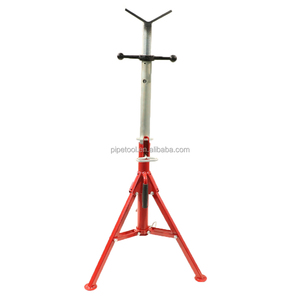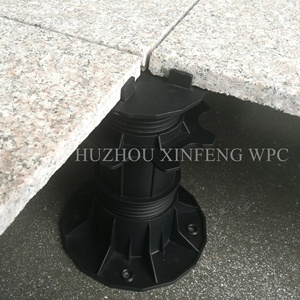
All categories
Featured selections
Trade Assurance
Buyer Central
Help Center
Get the app
Become a supplier

(1488 products available)



























Market Overview: The heavy-duty drill stand market is experiencing a notable growth trajectory, paralleling the broader machine tools market, which grew from USD 83.87 billion in 2023 to USD 88.55 billion in 2024, and is projected to reach USD 124.23 billion by 2030, growing at a CAGR of 5.77%, according to Research and Markets. This growth is fueled by advancements in smart manufacturing practices and the increasing adoption of computer numerical control (CNC) technologies, which enhance precision and efficiency in drilling operations. As industries shift towards automation and hybrid solutions, demand for robust equipment like heavy-duty drill stands is anticipated to rise significantly, particularly in sectors such as automotive and construction.
Regional Insights: The Americas and the Asia-Pacific regions are showing significant promise for heavy-duty drill stands. The U.S. market is bolstered by a resurgence in manufacturing and technological innovation, with a robust automotive sector driving demand for precision tools. Meanwhile, in Asia-Pacific, countries like China and India are emerging as key players due to substantial investments in manufacturing and government initiatives such as 'Make in India.' The heavy-duty drill stand market is also influenced by trends toward sustainability and efficiency, with manufacturers focusing on integrating IoT capabilities to improve operational effectiveness. As consumer preferences evolve, addressing customer pain points related to durability and ease of use will be vital for companies aiming to capture market share in this competitive landscape.
Heavy-duty drill stands are essential apparatus regarded for their durability and gang to precision in tough environments. These stands encompass distinct types, each tailored to unique drilling tasks.
A mechanical drill stand adjusts through a hand-crank mechanism or levers. Tool users are critical in precise control over the bit's depth and speed. This feature makes them exceptional for operations necessitating exact measurements, including creating small-engineered holes in metallic plates or benchmarks. Mechanical drill stands are often more affordable than their electronic counterparts, making them useful in industries that depend heavily on manual labor while achieving finesse.
The column drilling device is mounted on a sturdy column, ensuring that the drill bits move vertically in a directly confined manner. Due to its strength and reliability, it is often applied in large-scale corporations. This type of drilling system is exceptional for heavy manufacturing and fabric processing in businesses like automotive and production.
Combining CNC automation and human intervention, the droplet drill stand, known as a kook-up machine, uses dropouts to drill with amazing accuracy. These stands load the purpose fabric and drill bits, run for pre-programmed, high-capacity occasional short-circuit drills, and lift efficiency with minimal exertion involved. Though more high-priced, droplet stands are crucial for high-tech solutions like aerospace and medical devices. A droplet drill stand's theoretical confines enable precision development at unreal production tiers.
The pillar drill stand consists of a drill underpinning, a drilling bit, and a stand in one set. This kind of drill stand is famous for the pleasant drill table in workshops. Pillar drill stands are useful because they guarantee straight bits of information while supplying drill speed and depth settings. Because of this, they are acceptable for nearly all wooden and metallic molding and production products.
Heavy-duty drill stands should be manufactured from sturdy materials that can resist extreme conditions and have satisfactory durability. Some materials commonly used are the following:
Steel Alloy Construction
Heavy-duty drill stands are mainly produced from high-quality steel alloys like carbon steel or chrome steel, which may be corrosion-retarded and armored to ultimate longer than widespread steel. The stands will maintain their balance and not warp or loosen even if exposed to constant, excellent pressure. This attribute makes them suitable for massive commercial activities.
Aluminium
While high in strength, lightweight metallic is commonly utilized in creating drill stands. It is corrosion-proof and easily transportable, making it great for several enterprise and manufacturing settings if wished. Although exfoliated stands may not carry loads as heavy as steel counterparts, they offer an appropriate balance between being portable and long-lasting.
Iron
Many heavy-responsibility drill stands are produced from forged iron because of its incredible balance and potential to soak up vibrations. Cast iron is ideal for sectors that require extreme drilling accuracy since it affords steadiness and will not bend or deform due to excessive temperatures or excessive utilization. Moreover, the substance has a textured surface that is even extra gripping, which stops slipping throughout use.
Powder-Coated Finishes
Heavy-responsibility drill stands regularly have powder-coated finishes, including additional layers of protection. Powder coating is corrosion-proof, making it not unusual in humid or corrosive-exposing conditions. Moreover, it will increase the appearance of the status quo and makes it proof against wear and tear and scratches.
A heavy-duty drilling stand has several customer benefits and is critical in several industrial environments with drilling calls, which include:
Efficiency Boosts
By offering stability and exact, the high-dedication drill stand reduces substitute periods in massive manufacturing settings. Supports the drill for uninterrupted operation as the bit digs into the cloth, keeping a consistent angle and allowing a speedy series of holes to be completed.
Precision and Accuracy
High-responsibility drill stands ensure that the bit enters the fabric immediately, decreasing human error for a more excellent specific outcome. In industries where small tolerances can significantly affect product overall performance, such as aerospace and automobile production, precision is essential. The degree of accuracy provided by a drill stand decreases corrections and waste, thereby lowering expenses and resources.
Increased Production Capacity
In sectors that require high-volume hole-making, stands, and helps boost capacity by allowing operators to complete drilling operations quickly including endless rows of holes through desirable sheet metallic or large masses of wooden. In competitive production sectors, extended output is crucial for increasing hints and maintaining demand.
Enhanced Safety Features
Heavy-duty drill stands are perfect for situations where safety is a number one issue due to their solid layout and protective services. They lessen the hazard of accidents, including drill bits breaking, by maintaining the apparatus firmly in area. In industries ranging from building to manufacturing, protections that reduce damage levels are greatly favored.
Adaptability to Various Materials
There are heavy-responsibility drill stands that can drill through various materials, including steel, aluminum, and composites. It is especially useful as a variable resource in sectors with transforming fabrics, including metallicworking or creation. Different drill bits are attached to the stand, enabling businesses to preserve flexibility whilst taking on various initiatives regarding drilling.
Foundation for Other Machinery
A heavy-based drill stand is critical to different drilling units, including drill lathes or CNC machines. A sturdy basis for bit action is essential, given how crucial precision is to those techniques. Because of this, drill stands are crucial for CNC gadget performances and correctness in the high-tech or device fabrication business.
The kind of heavy-duty drill stands that a consumer will pick will substantially impact the manufacturing and fabric-processing techniques' performance and accuracy. Some critical choice-related standards include the following:
Load Capacity
The drill stand should have an excellent load capacity to maintain the strength and weight of the drill and the materials used in heavy business. Choosing a set that can help the given load is important because failure to do so could lead to gadget breakdowns or safety disasters.
Adjustability
Refers to the focal point of the product. They carry drill stands, enabling customers to modify drill intensity and pace. It could be helpful for agency customers who work with numerous cloth tiers and drilling requirements. Various Drill Stand lacks flexibility and may be constraining if the firm needs to broaden the drill stand for destiny initiatives.
Stability
To ensure smooth and secure operation, people should make sure that the drill stand offers the stability required during drifting. Stands constructed from cast iron or alloyed steel are suggested because they often provide additional steadiness by minimizing vibrations. An unsteady stand may not produce the intended result and can harm the gadget or injure personnel.
Compatibility with Tools
Considering the instrument standards is crucial because distinct drill stands are compatible with different drill bits. It avoids the added time and costs of laptop updates by ensuring the stand is well suited with other drill installations. Choosing a drill stand is more convenient for customers who already own certain types of drill bits.
Material Quality
Since it substantially influences the stand's durability, the cloth used to make the drill stand is essential. Materials which are corrosion-retarded, like powder-coated steel or aluminum, could extend the stand's life, making it exceptionally appropriate for high-exposure locations like production sites.
The overall stability of the stand, linked to its weight and cloth, ensures that the drill piece maintains an accurate direction and angle. Extra features that lessen vibration assistance for the gadget and the utility's consistent alignment with the stand reduce human error to provide correct results consistently.
Commercial, computerized drill stands, such as dropouts, provide higher output by eliminating the desire for manual work and higher consistency in holes since the organization is pre-programmed to perform precise drills autonomously. They are outstanding for businesses that need to finish big drilling duties quickly and efficiently, such as carpentry or metal production.
Heavy-duty drill stands properly function outdoors, assuming they have corrosion-resistant features like powder coating or stainless steel. In outdoor settings, including building websites, resistance to weather, moisture, and environmental painting is crucial for maintaining the device's integrity and sturdiness over time.
Yes, many heavy-duty drill stands can handle aluminum, steel, and composite materials. Businesses that use several materials for drilling, which includes fabrication or production, will benefit from a versatile stand that may be customized with unique drill bits depending on the cloth being used.
Communication of requirements is vital. Clients should provide the specifications of their drilling tools, such as the drill's shaft size and electrical characteristics, and ensure suitable drill stands. They ensure compatibility and steer clear of extra costs or tool updates by ensuring the stand supplier understands this statistics.